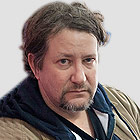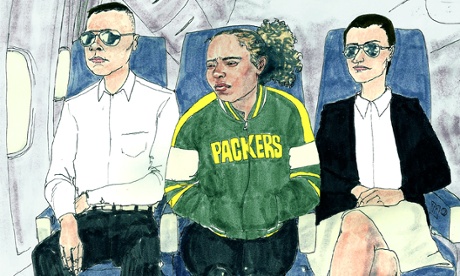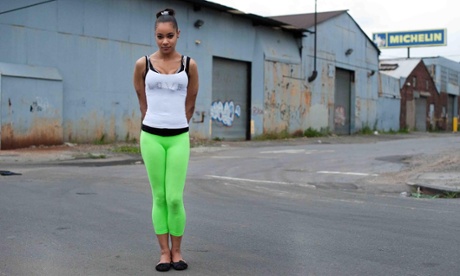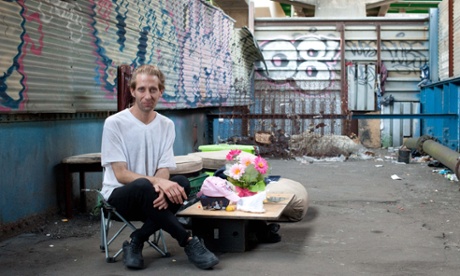Dropped in any new town in the US, I know where to buy heroin, crack or marijuana in a few minutes: near the McDonald’s in the poorest section of town.
That isn’t to say drugs don’t cut across all economic strata, that addiction can’t affix itself to almost anyone, anywhere. It can. But the larger reality is poorer neighborhoods are far more affected by addiction; the use of and trade in illegal drugs is higher, more open and visible, and treated as a crime not a tragedy.
This isn’t a statement about the character of the people who live there, but about the character of the neighborhood they live in: the lack of opportunities it offers, how aggressively and unfairly it is policed, and the failure of institutions within them. As a result illegal drugs, and the violence around them, have sadly become a “normal” part of the community.
This is also not a statement about the residents: the majority do not use drugs. Yet a lot of those who do are visible and aggressive, with the accompanying violence upsetting and unfairly defining the neighborhood.
The area surrounding the intersection of Bailey and Genesee in the east side of Buffalo is like that. It has a poverty rate four times the national average, and the impact of drugs is in your face. The intersection contains a McDonald’s, a Chinese take-out and a liquor store, and entering any of them means being immediately approached by people asking for money.
Jennifer (her name has been changed) was the first to ask me for $2, before I could leave my car in the McDonald’s parking lot. “For food. I don’t use drugs now. I have though, just weed but not crack. Not today though.” She said this with an urgency that defied her words. I offered to buy her a Big Mac, but she said she didn’t eat such things, and changed her reason for needing the money to getting a bus.
I asked to see her arms. As she rolled up her sleeves revealing track marks, she laughed, “You must be a cop?”
She smiled after I told her I wasn’t, “Well then you a minister or a drug counselor, otherwise you wouldn’t be about here. Or maybe you want to buy something.”
I explained I didn’t need anything, I was writing about drugs. I gave her the $2. After posing for a picture and giving an interview, she crossed the street to a group of young men standing in front of a corner store, bought a small package from them, walked down the street and climbed into an abandoned home.
The next person to ask for money as I crossed the parking lot was Anthony (his name has been changed), who was precise in his intentions for the money: “For drugs.” He told me how he started using them at 17, first cocaine and then crack, and how he has spent the last 40 years shifting between the streets, jail, and group homes. He uses the McDonald’s bathroom to wash up in, “when the nasty store manager who runs me out isn’t there.”
The neighborhood around the intersection has been hit particularly hard as Buffalo’s population was cut in half from 580,000 in 1950 to 258,000 now. It is sparsely populated with closely spaced homes, many unfilled (42% of homes are vacant), or vacant lots emptied of prior homes, reminders of its busy past.
Then, it housed people who worked in steel mills (Lackawanna Steel Co the largest), auto plants, and other factories. Those are gone now: the jobs moved overseas, down south, or the industry bankrupt by technology. The factories haven’t been replaced and new jobs haven’t come. Empty fields behind barbed wire have taken their place.
The resulting vacuum has brought joblessness, poverty and drugs. There are dealers openly slinging on about one-fifth of the corners. There are needles and empty liquor bottles clustered along the worn paths snaking across vacant lots. There are folks such as Anthony and Jennifer asking for money outside and inside of most every business.
Economic pain and drugs have defined the neighborhood, which has further distanced the residents from traditional opportunities – like education and jobs.
As Robert J Sampson writes in his sociological study of Chicago, Great American City: “Neighborhoods are not merely settings in which individuals act out the dramas produced by preset scripts … but are important determinants of quantity and quality of human behavior in their own right.”
We know family matters, we know friends matter, yet neighborhoods matter almost equally. They have a character affecting the lives of those who live there; they have personalities that influence residents and determine who chooses to be a resident.
In this part of Buffalo, residents see dealers on the corner, see folks living on the streets shooting up in empty lots, have to navigate a scrum of users looking for money to get into the McDonald’s. They hear shots at night, and then have to walk past homemade memorials of candles and liquor bottles for neighbors killed. They themselves have an almost even chance of having an aunt or uncle or step-dad or brother in jail, or in rehab, or in addiction or battling addiction.
It means when they are stressed, depressed, or coping with a trauma – and with poverty often comes depression, abuse, or ill health – turning to drugs is too easy. It is an ugly feedback loop of joblessness, hopelessness and trauma that provides fertile grounds for illegal drugs.
Amplifying this is a national drug policy that treats addiction amongst the wealthy as a tragedy, and amongst the poor as a crime. The result is the disproportionate arrest and incarceration of those in poverty, especially African Americans, who are more likely to get arrested, more likely to face charges, and more likely to get jail time than wealthier users. It can turn a youthful mistake or a bad period into a lifetime stigma, and it further decreases the chances of getting a job, increasing the hopelessness.
The neighborhood isn’t only caught in an ugly cycle of poverty and drugs, it also draws users to it. Group homes for mental illness, methadone clinics, rehabilitation centers and homeless shelters are all there because wealthier neighborhoods refuse them.
John is a constant around the Buffalo neighborhood, weaving through the streets, shouting profanities (and then apologizing). He lives in a home nearby because of his disability (Tourette syndrome), where he gets a monthly allowance. He came here 15 years ago from a small town 40 miles from Buffalo, drawn by the ease of getting crack, and stayed because of the shelter. Now he only drinks “high gravity liquor to feel low gravity”.
When he is able, he waits outside the McDonald’s to collect money. “I get money from old folks. They understand my situation. Some used to be like me but now they go to church. The younger kids just beat me up.”
I found Grady Thompkins, 56, standing in an empty field eyeing a vacant home. “I would love to get this place in shape, but nobody gonna give me a job, or lend me any money, with my record.” When I asked him how big his police record was, he stretched his arms as far as they could go and smiled, “THIS BIG! I spent 30 years in a Georgia jail, just left two years ago.”
He did time for dealing and using drugs, and for the violence that unfolded around that. “I got some assaults on my record, but nothing that nobody didn’t have coming to them for playing the game we played.” He came to Buffalo to be with family, and chose this neighborhood because “this place understands me, understands my past. Nobody gonna get up in my face or judge me for having done what I did.”
For residents who were present before factories left, not getting depressed and caught up in drugs has been hard.
Derek Anderson, 51, moved into the neighborhood when he was five. His family was one of the first African Americans to move in, surrounded then by mostly Polish neighbors.
His parents moved to Buffalo from the south for jobs, and to escape the racism. They found jobs but they also found racism, “Nobody would let us black kids play basketball. They put up large signs on the courts saying, ‘Nigger go home’. If we crossed certain streets, over into Schiller Park for instance, we were beat up.”
His dad worked at the Chevy plant nearby, but as Derek approached working age the jobs were fewer and fewer. They are completely gone now.
“Everybody used to be able to get their dads’ jobs. They were handed down like an old heirloom, but when I got my turn there was nothing to hand down.”
He turned to dealing drugs for a stretch, something he admits without a pause. “Oh yeah, I got caught up in that stuff, everyone did. Dealt crack and marijuana, but put that way behind me.”
Now he drives tractor-trailers and fork lifts. His friend Kevin, when I asked about drugs, laughed with a knowing smile, “I did some stuff, but who hasn’t around here. Not now though.”
Everyone I met was open about their or relatives past involvement with drugs. I heard it despite being a stranger and despite them knowing I would write about it. There is no embarrassment, and why should there be? It is their reality and it is a reality for almost anyone who lives in or surrounding by poverty.
Plenty of residents don’t and haven’t used drugs. They have office jobs, and try to stay above the fray. You see their homes nuzzled next to abandoned houses. Porches with Christmas decorations, lawn furniture, and toys next to porches behind police tape and tagged with “NO GAS” signs.
The sociologist Orlando Patterson has noted, contrary to stereotypes, that most who live in these neighborhoods are, “law-abiding, God-fearing and often socially conservative …. Their youth share their parents’ values, expend considerable social energy avoiding the violence around them and consume far fewer drugs than their white working- and middle-class counterparts, despite their disproportionate arrest and incarceration rates.”
Yet you don’t see those residents out much. They spend their time inside trying to keep their children in school, church and away from the drugs. Their hopes and desires aren’t any different from folks in wealthy neighborhoods; just the hurdles they have to overcome are greater.
Katie Hall is one of those mothers. She has six kids, her oldest is 31 and her youngest, Mikel, is six. “We don’t go out much, certainly not at night. Crime is just too bad and there are too many shootings. Everybody who is out is either doing violence, selling drugs, or a walking zombie from drugs.”
She is trying to get out of the neighborhood, but can’t afford any other place. “I dropped out of high school when I got pregnant with my first child at 15. I am limited in what I can do. Still, I try my best to keep my kids in school and away from violence.”
The violence they fear is real – the number of murders and violent assaults in Buffalo is four times the national average, with most of the crimes clustered nearby, making the rate around the McDonald’s far worse. The violence often involves drugs, although few in the community ever say that, preferring euphemisms like “street life” or “gang activity”.
You see it in the popup memorials scattered about, collections of votive candles, liquor bottles, pictures and small tokens to the person killed.
Curtis Smith was killed on his 29th birthday. His memorial is centered on a telephone pole next to the playground the party was held in. Five months later colored goodbyes are still chalked in the road.
His friend Trigger, who walking by, was friendly but terse. “He was killed, on his birthday, for jealousy. He had a bit of money. I miss him every day.”
The newspaper report never mentioned drugs, using street euphemism instead:
Buffalo homicide detectives say the shooting might have been gang-related, though Smith’s family members insist he walked away from street life several years ago to focus on his children and a career as a party promoter. And while there are believed to be many witnesses, police on Thursday said they have received “zero cooperation”.
An older neighbor, who demanded we speak inside away from prying eyes, was more blunt. “Running the streets, flashing money he got legally and illegally. You do that, someone gonna get cross. Kids escalate things.”
Me: “Was it about drugs?”
Him: “What do you mean about drugs? Sure he used and dealt a bit, but everyone has done that once or twice.”
Dmitri was standing on an empty corner early Sunday morning, near a memorial of clustered Hennessy bottles.
Me: “You know the story behind the memorial?”
Dmitri: “My Uncle TJ. Got killed. He was in the wrong place at the wrong time.”
Me: “My condolences.”
Dmitri: “No worry man. Things happen out here. You just happy to wake up alive each morning.”
The violent death of young men doesn’t just fill the streets with memorials, it fills the memories of those who live there, always lurking beneath the surface of any conversation. When I speak to mothers, expecting stories of violent deaths, I shy away from asking about their children.
Sheri, 54, told me her story without me asking. I was photographing a colorful house in an otherwise drab street. Two men, standing in the shadows, ran out to engage a car that approached slowly and then sped off quickly.
The men turned to me: “Why you around here with that camera? Get out of here. We don’t know you. You could be a rapist. Leave or else we gonna make you regret.”
Sheri rolled down the street, raising her voice at the men in a firm but resigned manner. “What you two doing acting all foolish. You usually got smiles for everyone, but now you acting like fools. Leave this man alone, and get on with your lives.”
She placed her wheelchair between the men and myself, and turned to me as they walked away. “Don’t worry about them. They moved in here a few months ago, they usually don’t cause trouble.”
Sheri, 54, grew up on the block. Her dad worked for Harrison Radiator, before the plant closed. “Most who still live here are good, own their own home, but most of the homes are gone. This street used to be filled with kids playing. Then the homes fell vacant, and the only people who moved in here are like those two, drug dealers or kids who use drugs.”
“They remind me of my only child. He was killed when he was 16. You know, I miss him every day, but I feel sorrier for the mother of the boy who killed him. She has to go every Sunday to prison and see her child locked up. He still alive, but he is dead.”











